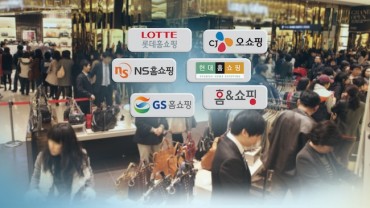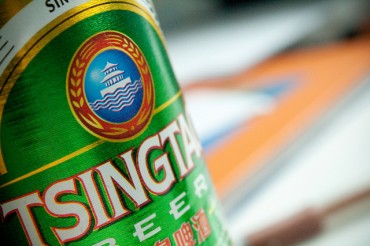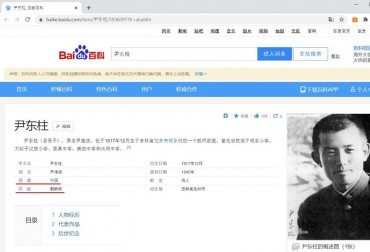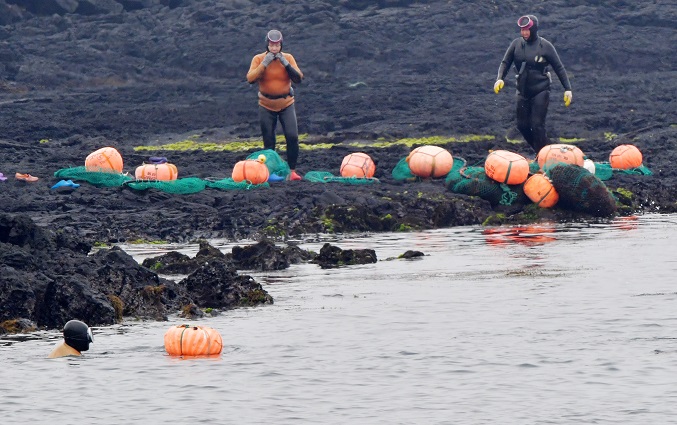
This undated file photo shows female divers warming up before diving into waters off Jeju Island. (Yonhap)
JEJU, May 18 (Korea Bizwire) — Jeju Island’s government announced on Wednesday its plans to increase the “Haenyeo Retirement Allowance” provided to elderly Jeju haenyeo, female divers who harvest a variety of sea life, upon their retirement.
The proposed amendment to the ‘Ordinance on the Preservation and Fostering of Jeju Haenyeo Fishery’ includes lowering the age requirement for receiving the retirement allowance from 80 years old or older to 75 years old or older.
Under the amendment, the monthly payment amount for the retirement allowance will be raised from 300,000 won (US$224) to 500,000 won for a duration of three years.
Additionally, the settlement allowance for new haenyeo below the age of 40 will also be increased from 300,000 won to 500,000 won per month for three years.
The monthly allowance for elderly haenyeo who continue to work and do not retire will remain unchanged, at 100,000 won per month for those aged 70 to 79 and 200,000 won per month for those aged 80 and older.
However, despite these efforts, the traditional heritage of haenyeo in Jeju is facing a significant crisis.
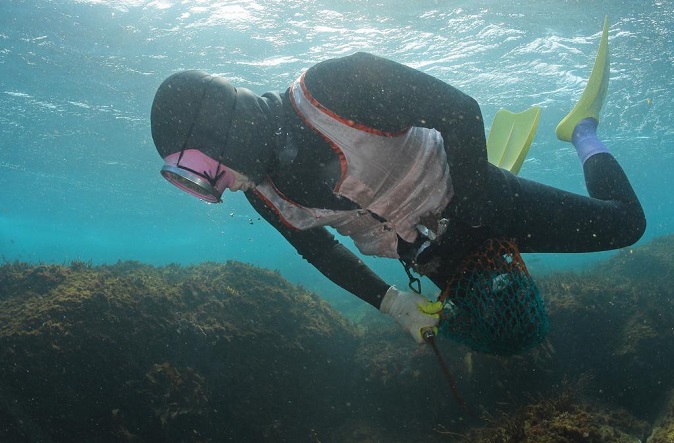
A “haenyeo” female diver collects shellfish in waters off Gapa Island in the city of Seogwipo on South Korea’s largest island of Jeju on Oct. 27, 2021. (Yonhap)
Over the past year, there has been a decline of 211 haenyeo working in Jeju’s waters, reducing the number of active haenyeo to just over 3,000.
The profession is also experiencing an aging trend, with 65 percent of haenyeo being over the age of 70.
According to the ‘Status of Haenyeo in Jeju’ report released by the Jeju Special Self-Governing Province, there were a total of 8,245 haenyeo in Jeju at the end of last year.
Among them, 3,226 were active haenyeo, accounting for approximately 40 percent of the total, while 5,019 were former haenyeo.
Compared to the previous year, the number of former haenyeo increased by 9, reaching a total of 5,019, whereas the number of active haenyeo decreased by 211 (6.1 percent), down to 3,437.
Over the past five years, the number of active haenyeo on Jeju has decreased by 759 (19 percent) from 3,985 in 2017, reaching a precarious level.
Broken down by administrative city, there were 1,945 active haenyeo in Jeju City, a decrease of 115 (5.6 percent) from the previous year, and 1,272 in Seogwipo, a decrease of 96 (7 percent).
In terms of age distribution, there were only four haenyeo under 30, 24 in their 30s, 63 in their 40s, and 175 in their 50s. Conversely, the number of haenyeo aged 60 and above reached 2,960, accounting for 91.8 percent of the total.
Among the active haenyeo, 1,328 were in their 70s, representing 41.2 percent of the total, and 762 were 80 years old or older, comprising 23.6 percent. This means that one out of every four practicing haenyeo is over the age of 80.
While approximately 30 new haenyeo are registered each year, the aging population, retirements, and deaths have resulted in a decline in the number of current haenyeo.
This decline is not only due to the relatively low income compared to other industries but also the difficulty for new individuals to enter the profession.
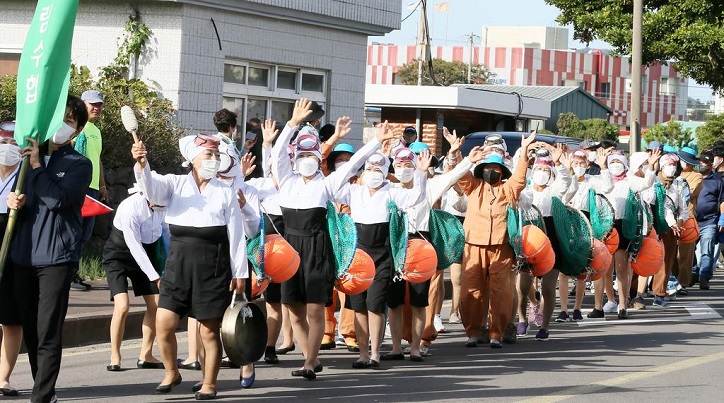
A group of “haenyeo,” or female divers, parade as part of an event to mark the 15th Jeju Haenyeo Festival held on the southern resort island of Jeju on Sept. 24, 2022. (Yonhap)
Adding to these challenges, concerns have arisen regarding the release of contaminated water from the Fukushima Daiichi Nuclear Power Station in Japan, which further threatens the preservation of Jeju’s traditional haenyeo culture and its fishing industry.
The apprehension and worry surrounding the contaminated water have already led to a decline in the consumption of Jeju seafood.
“When searching for seafood in the open market, it’s becoming increasingly difficult to find anything from Jeju. It has already started to affect consumption, and companies are planning to offer employees paid leave or recommend that they resign,” noted Lee Ho-sung, president of the Jeju Seafood Exporters Association.
Han Yong-sun, head of the Aquaculture Fisheries Cooperative Association, emphasized the severity of the situation, stating, “It’s a matter of survival, and if the water is found to be radioactive, it will continue to be released for 30 years. This not only impacts the haenyeo but also the entire Korean fishing industry. Fisheries will completely collapse.”
There have been suggestions to submit an opinion to UNESCO regarding the impact of the discharge of contaminated water on the haenyeo culture, which is recognized as a UNESCO intangible cultural heritage.
Kim Jeong-do, policy director of the Jeju KFEM (Korea Federation for Environmental Movements), urged action, saying, “We strongly urge UNESCO to give heed to our comments. At the current pace, the precious haenyeo culture is facing the risk of extinction. It is imperative to emphasize that addressing this issue goes beyond a mere inspection team visit to the contaminated water situation at the Fukushima nuclear plant in Japan.”
“While the government claims that ten ministries are handling the matter and there are no concerns, we would like to underscore the importance of involving the directly affected parties in the decision-making process,” he added.
Lina Jang (linajang@koreabizwire.com)



